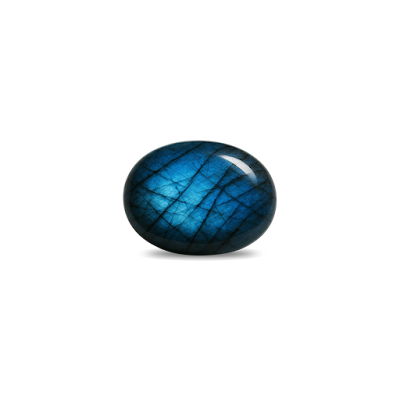Labradorite, with its mesmerizing play of colors and mystical allure, has captivated gem enthusiasts, spiritual seekers, and jewelry lovers for centuries. Known for its iridescent flashes of blue, green, gold, and violet, this unique gemstone is more than just a pretty face-it’s a stone steeped in history, geological wonder, and metaphysical significance. In this 1500-word guide, we’ll delve into the origins, properties, uses, and secrets of the Labradorite gemstone, offering insights that make it a must-have for collectors and healers alike.
What is Labradorite Gemstone?
Labradorite is a member of the feldspar mineral group, renowned for its labradorescence-a striking optical effect where light interacts with microscopic layers within the stone, creating a dazzling display of colors. This phenomenon, akin to the Northern Lights trapped in stone, sets Labradorite apart from other gems.
Key Characteristics:
- Color Base: Typically gray, dark green, or black, with shimmering overtones.
- Labradorescence: Exhibits metallic hues of blue, green, gold, or violet when tilted.
- Hardness: 6-6.5 on the Mohs scale, making it durable for jewelry but requiring careful handling.
- Origin: First discovered in Labrador, Canada, in the 18th century; now mined in Madagascar, Finland, Australia, and Mexico.
The History and Lore of Labradorite
Labradorite’s story begins with the Inuit people of Canada, who believed the gemstone was forged from the Aurora Borealis. According to legend, a warrior struck the Northern Lights with his spear, trapping their radiance within the rocks along the coast of Labrador. This lore cemented its reputation as a “Stone of Magic.”
By the 18th century, European gem traders popularized Labradorite, using it in ornamental carvings and jewelry. Today, it’s celebrated in both metaphysical circles and haute couture, symbolizing transformation and protection.
Physical and Geological Properties
Labradorite forms in igneous rocks through a process called crystallization, where molten magma cools slowly underground. Its signature iridescence arises from light diffraction between alternating layers of minerals.
Notable Varieties:
- Spectrolite: A rare Finnish variant with a broader color spectrum.
- Rainbow Moonstone: Often confused with Labradorite but lacks its intense labradorescence.
Geographic Sources:
While Canada remains iconic, Madagascar produces vibrant blue-green specimens, and Finnish Spectrolite is prized for its rarity.
Metaphysical Properties: The Healing Power of Labradorite
In holistic practices, Labradorite is revered as a “Stone of Transformation.” Its energy is said to shield the aura, enhance intuition, and awaken latent talents.
Key Metaphysical Benefits:
- Spiritual Protection: Believed to create a barrier against negative energy.
- Third Eye & Throat Chakra Activation: Enhances psychic abilities and honest communication.
- Emotional Balance: Helps release stress and fosters resilience during change.
- Creativity Boost: Inspires innovation for artists and writers.
Note: Metaphysical claims are based on tradition and should not replace medical advice.
How to Use Labradorite in Daily Life
From jewelry to meditation, Labradorite’s versatility makes it easy to incorporate into everyday rituals.
1. Jewelry:
- Necklaces/Pendants: Wear near the throat or heart to align energy.
- Rings/Bracelets: Keep its protective vibes close throughout the day.
- Earrings: Highlight its iridescence while stimulating the Third Eye.
2. Meditation:
- Hold a Labradorite palm stone or place it on your forehead to deepen mindfulness and access inner wisdom.
3. Home Décor:
- Position labradorite clusters in workspaces to spark creativity or near entryways to ward off negativity.
Buying Guide: How to Choose Authentic Labradorite
With imitations flooding the market, follow these tips to ensure you’re getting the real deal:
- Check for Labradorescence: Genuine Labradorite displays color flashes that shift with movement. Static colors may indicate a fake.
- Inspect Imperfections: Natural stones have minor inclusions or cracks; overly flawless pieces might be synthetic.
- Consider Cut and Shape: Cabochon cuts maximize labradorescence. Avoid overly glossy finishes, which may mask low quality.
- Trust Reputable Sellers: Purchase from certified gemologists or stores with verified reviews.
Caring for Your Labradorite Gemstone
Though relatively durable, Labradorite requires mindful maintenance:
- Cleaning: Use mild soap, water, and a soft cloth. Avoid ultrasonic cleaners.
- Storage: Keep separate from harder gems like diamonds to prevent scratches.
- Energy Cleansing: Recharge its vibes under moonlight or with sage smoke.
Labradorite vs. Similar Gemstones
- Moonstone: Shares a pearly sheen but lacks labradorescence.
- Opal: Offers play-of-color but is softer and more porous.
- Lapis Lazuli: Richly blue without iridescence.
Conclusion: Why Labradorite Deserves a Place in Your Collection
Labradorite is more than a gem-it’s a portal to imagination, protection, and self-discovery. Whether you’re drawn to its healing properties, geological marvels, or aesthetic charm, this stone promises to enchant and empower. By understanding its history, uses, and care, you can fully harness the magic of the Labradorite gemstone in your journey.
Explore our curated selection of Labradorite jewelry and crystals to invite its transformative energy into your life today!














0 Comments